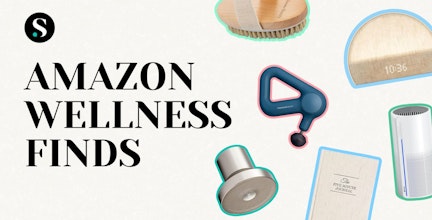Decoding Ingredients: Different Names for Unhealthy Items

Food manufacturers sure don’t make it easy for consumers to shop conscientiously. We have to do homework just to decipher the nutrition labels on the backs of boxes and cans, otherwise they’re just a mess of percentages and multi-syllabic words. Even just trying to avoid certain ingredients is hard enough; manufacturers want you to buy their stuff, so they don’t want to make questionable content too obvious. As a result, ingredient lists on processed foods are long, jumbled, and full of words you’d need a science background to understand. Fortunately, figuring out whether foods have ingredients we don’t want?like MSG, sugar, or trans fat?isn’t as intimidating once we know what to look out for. Unfortunately, considering that something as simple as sugar has over twenty names, we clearly have our work cut out for us.
Monosodium glutamate by any other name is still MSG, an additive that gives food a salty, savory flavor (also known as umami, the fifth taste). You can find it in any number of packaged goods, canned items, and snacks, but you won’t always find it listed as “monosodium glutamate” in the ingredients. If you suffer from MSG symptom complex ?having physical reactions, like headaches, nausea, and heart palpitations?or you just want to avoid suspicious additives altogether, look out for these other names for MSG:
The American Heart Association (AHA) recommends that men and women eat no more than nine and six teaspoons of sugar per day, respectively. However, the AHA also reports that Americans consume about twenty-two teaspoons of sugar a day on average. A good amount of that comes from hidden sugars; that is, sugars in processed foods like crackers and condiments. Sugar falls under many different labels, so it’s all too easy to get your daily sugar quota and then some by not reading ingredient lists carefully:
As of 2008, the FDA requires every food manufacturer to list the amount of trans fats in their products if it exceeds more than .5 grams. While that’s a laudable effort on the FDA’s part, it still means that products can boast “No trans fat!” even when there are trace amounts. Since trans fat consumption is linked to increased risk of heart and cholesterol problems, any amount should be considered unsafe. And since producers can fudge the truth about whether it’s even in food or not, we should be even more vigilant about checking the ingredients:
Do you think you have been unknowingly eating ingredients you’re trying to keep out of your diet?
Originally written by Vicki Santillano for DivineCaroline.com
Make a Comment
 by
basilandcatnip | GARLAND, TX
by
basilandcatnip | GARLAND, TXAnd they spent a lot of effort a few years ago to get MSG out of the food, only for it to get back in. Dr. Oz did a good segment on this the other day too. Thanks for getting the information out there so we can be more infromed consumers, especially ones with family members that may have health issues, triggers, and allergies!
 by
liz2121 | Watervliet, MI
by
liz2121 | Watervliet, MIThanks for the info, would love a further list of others.
 by
DailyGrommet | Lexington, MA
by
DailyGrommet | Lexington, MAGreat, informative article. Who would have thought "textured protein" was MSG? We will be looking for these terms in our own food and in our Grommet testing. Thanks!
 by
msfriendly | MONROE, WI
by
msfriendly | MONROE, WII'm so sick of deceptive advertising! I'm sick of business touting "natural ingredients" when they are genetically altering food (like high fructose corn syrup). Be informed and read those labels!










_01252024061712.jpg?max-w=432&max-h=220&fit=crop&auto=format)

_10242023164832.jpg?max-w=432&max-h=220&fit=crop&auto=format)


_08172023152001.jpg?max-w=432&max-h=220&fit=crop&auto=format)


 (6)_07082023175312.jpg?max-w=432&max-h=220&fit=crop&auto=format)
 (1)_05192023144508.jpg?max-w=432&max-h=220&fit=crop&auto=format)

 (37)_05032023114523.jpg?max-w=432&max-h=220&fit=crop&auto=format)
 (3)_04112023125932.jpg?max-w=432&max-h=220&fit=crop&auto=format)
 (36)_04272023152113.jpg?max-w=432&max-h=220&fit=crop&auto=format)